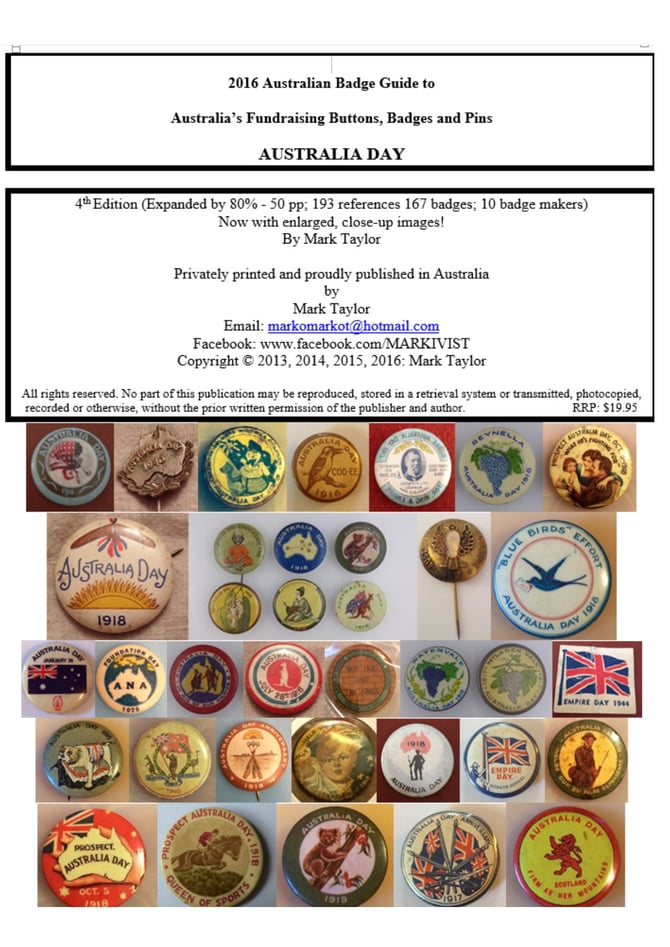
2016 Australian Badge Guide to Australia's Fundraising Buttons - Australia Day
We are proud to present to you our 4th edition of this our very popular Australian Badge Guide – the 2016 Australia Day Australian Badge Guide. That’s right we have been refining this guide since 2013 and genuinely believe this to be our best yet, having been nearly doubled in size since last year.
We hope you like it. Some 50 pages in length, with 193 references, and some 167 badge and button images, this makes this Australian Badge Guide a must have for serious collectors and those who are just fascinated by Australia’s social and cultural history. Who knows, perhaps you too will become an even greater badge enthusiast.
Australia Day is today celebrated on 26 January, however, there was, and continues to be, much conjecture about the celebration of Australia Day and when to celebrate it. Initially, this discussion was impacted by the federal nature of Australia and the fact that Australians closely identified with the British Empire – a fact which continued well into the 20th century up to and including the fall of Singapore. This was further reinforced by the State, with conservative Australian federal and state governments in 1905 further promoting and cementing the prominence of the Empire by instituting what was called Empire Day, a day which was observed annually on 24 May , the birthday of the late Queen Victoria. Apparently the thinking behind Empire Day was to reassure those “Australian” citizens who feared that the federation would weaken the ties of subsequent generations of Australians to Britain. Another motivation was to weaken what was then an emerging Australian Labor Party with a long-since defunct democratic socialist platform. The date of Empire Day in turn created controversy, with Sydney Irish Catholic Church leaders deciding in 1911 to re-name Empire Day, Australia Day, as the date, 24 May, was also the feast day of Our Lady Help of Christians, Patroness of Australia. This move by the Catholic Church leaders in Australia reputedly prompted an indignant response from militant Protestants at a time characterised by intense sectarianism between the religious denominations then operating. Apparently, the introduction of the (British) Empire Day and its impact in schools intensified discussion within the Australian Natives Association (ANA) about finding an appropriate national day for Australia. The NSW branch of the ANA believed that the date, 26 January, came with baggage associated with indigenous dispossession, and therefore proposed replacing Anniversary Day with Foundation Day on 29 April, the day Captain Cook first landed on the east coast of Australia in 1770. But the ANA's national conference decided against this and voted to retain the date of English settlement, 26 January, as the official date to mark Australia Day.
During World War I , , the date 30 July 1915 , became Australia Day as it (and days “subsequent to Australia Day ) was seen as a way of raising funds for the war by appealing to, and drawing upon the pride of Australians in their soldiers' achievements at Gallipoli and their growing confidence in Australia, and being an Australian citizen more generally . Australia Day buttons were sold to aid the Australia Day Fund for Australian soldiers who were wounded and the public were encouraged to apply for a button “in order to avoid disappointment” (with the likely cost of such buttons being a shilling ).
 Cart
Cart  Checkout
Checkout